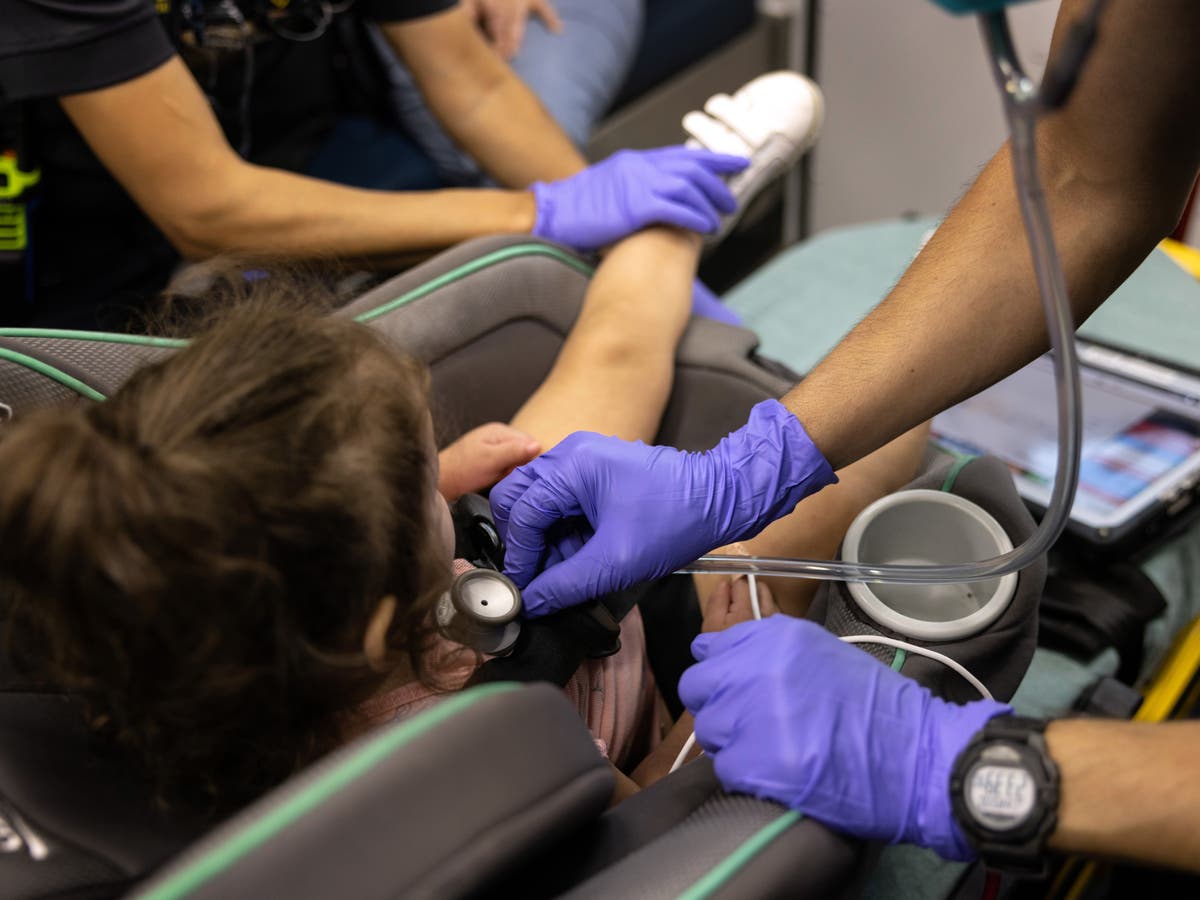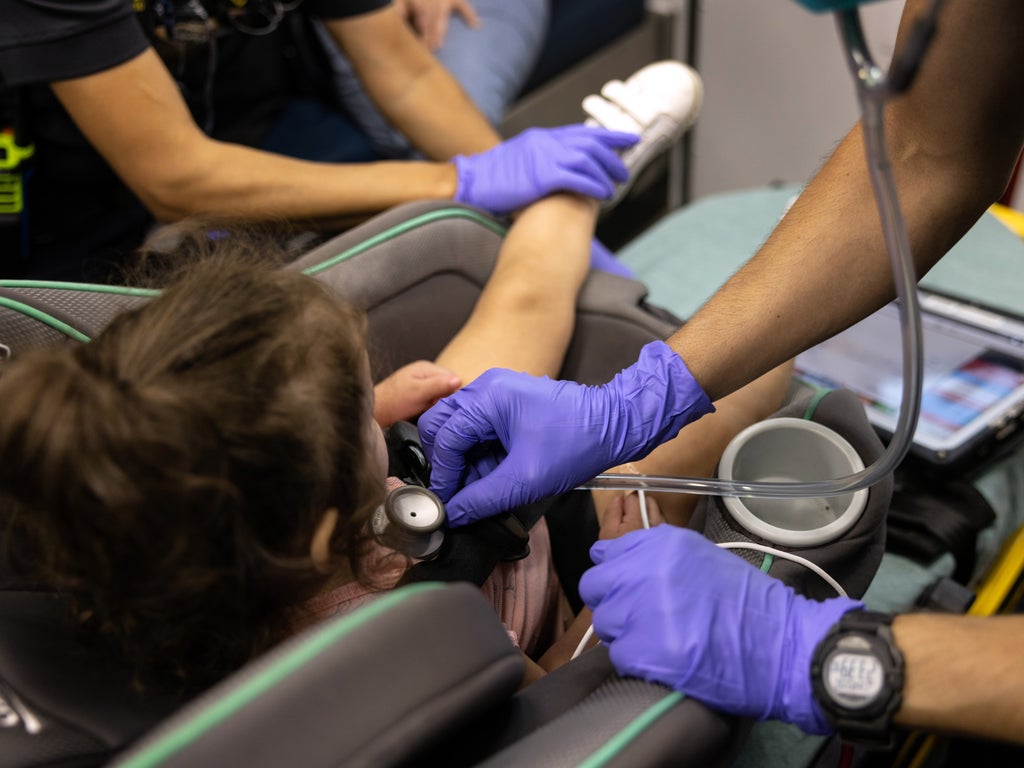At a time when the Omicron wave appears to be easing, fresh concern has emerged around the impact of the variant on children.
Since the turn of the new year, daily hospitalisations have risen to record-high levels. Although they are incomparable with admission rates for adults, more children have been taken to hospital in the first nine days of 2022 (1,098) than the entirety of the first wave (1,333).
However, as has been the case from day one, there’s more to the data than meets the eye.
Indeed, the children being presented to A&E are far less sick than they have been at any stage of the pandemic, dismissing any theory that Omicron is more severe in the young.
Across all age groups, the proportion of hospitalised children requiring oxygen – a clear indication of severity – has fallen. Between 14 December and 12 January, only 12 per cent of under-1s were given oxygen – down from 20 per cent in the Delta wave. This drop-off has also been recorded among older cohorts.
The number being moved to intensive care has similarly decreased over time, while the average amount of time a children of any age spends in hospital is also down. At the beginning of the pandemic, 12 to 17-year-olds were typically hospitalised for 11.5 days. Now, it’s 2.5 days. This trend is repeated across the board.
“I really want to emphasise the fact that these are not particularly sick infants,” said Calum Semple, a professor of child health at the University of Liverpool. Dr Camilla Kingdon, president of the Royal College of Paediatrics and Child Health, said those “on the shop floor” were not “picking up any signals that are overly concerning”.
The data comes from the Isaric study, led by Prof Semple, and is drawn from half of all NHS hospitals, making it “broadly representative” of the national picture, he said.
So what is behind the recent uptick in admissions? Some experts have speculated that the high prevalence of infections in the UK – which have reached previously unseen levels in recent weeks – is playing a key role.
With more virus around, it’s to be expected that more children are catching Covid and falling ill. Incidental admissions – those who are taken to hospital for other health-related issues but turn out to be positive – are also going to be on the rise amid the current Omicron wave, though data on this is light.
Due to the current high rates among the young, “around one in 12 of any admission into hospital, whether it’s with a broken leg or appendicitis or any reason at all, has the chance of being [Covid] positive,” said Russell Viner, a professor of child and adolescent health at University College London.
However, the high prevalence theory doesn’t fully account for the fact that the recent rise in admissions aren’t consistent across all age groups. Instead, they’re being driven by infants.
The vast majority of children hospitalised in December and January were aged under one – 171 out of 405, or 42.2 per cent. As a proportion, this is up – significantly – from the previous waves, when roughly 30 per cent of paediatric admissions were among the under-1s.
Equally concerning, more children from the poorest areas of the UK are now being taken into hospital, compared to earlier in the pandemic. Those from the most deprived fifth of households account for almost half of admissions, the data show.
“This is seen across all ages and is likely reflecting lower vaccination rates in teens from deprived areas, more exposure to infection and higher rates of other health condition making them more vulnerable to severe illness once infected,” said Professor Christina Pagel, director of the Clinical Operational Research Unit at University College London.
These young babies “are not desperately sick” and are “mostly coming in overnight”, as Prof Semple said, but there are no doubt more of them compared to earlier in the pandemic.
One hypothesis is that the high transmissibility of Omicron, which has been ripping through all recorded age groups, has allowed it to succeed where other variants have failed: in reaching those tiny pockets of the population that have yet to develop immunity to Covid. In other words, newborn babies.
“The group with the lowest rate of immunity is children under five, and in particular, children under the age of one year,” said Dr Alasdair Munro, a clinical research fellow in paediatric infectious diseases at the University of Southampton. “This means we would expect a larger proportion of admissions to be among this population, which is what is demonstrated in this data.”
Others have theorised that Omicron’s apparent preference for replicating higher up in the airway, which is smaller and not as developed in infants, means it’s causing this age group the type of respiratory difficulties that are typically seen with annual winter infections.
“There’s potentially some evidence that this variant of the virus is affecting the upper airways more than previous variants,” said Dr Viner. However, he added, “I think we need to be careful in suggesting that it’s all down to that”.
Either way, in terms of children requiring brief hospital care, “I think we’re seeing Covid behaving a bit more like the normal winter viruses in children,” said Dr Viner.
Data shared by Dr Munro shows that around 15,000 children, aged 17 and under, have been hospitalised for Covid-19 since the beginning of the pandemic. In comparison, annual child admissions for viral wheeze, bronchiolitis and otitis media stand at 77,488, 51,655 and 33,000 respectively.
“As paediatricians, we are accustomed to having busy winters where we see lots of particularly under ones, typically with high fevers, often with some kinds of respiratory distress, you know, increased work of breathing, cough, poor feeding. The pattern this winter is very, very similar,” said Dr Kingdon.
Of course, the reality is that Covid is now here to stay. The current clinical picture is “incredibly reassuring”, as Dr Viner said, reinforcing the belief that the virus poses a very minor risk to the vast majority of children.
But it nonetheless remains a burden, and one that can only be minimised through a national approach that, rather than encourage Covid’s spread, seeks to prevent it.








More Stories
New vaccine may hold key to preventing Alzheimer’s, scientists say
Just 1% of pathogens released from Earth’s melting ice may wreak havoc
Europe weather: How heatwaves could forever change summer holidays abroad